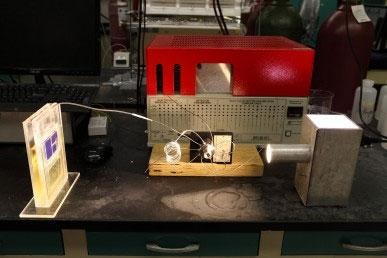Solar Cell Turns CO2 Into Hydrocarbon Fuel
Researchers from the University of Illinois at Chicago have created a breakthrough solar cell that can be produced cheaply and is able to efficiently create a usable hydrocarbon fuel using carbon dioxide found in the air and sunlight. The new solar cell literally creates usable fuel from thin air and light. The scientists have reported their findings in the July 29 issues of Science.
The new solar panel works in a manner similar to how plants function by converting carbon dioxide in the air around the cell into fuel. The scientists say that a solar farm using these artificial leaves would be able to remove a significant amount of carbon from the atmosphere and use that carbon to produce an energy-dense fuel efficiently.

"The new solar cell is not photovoltaic — it's photosynthetic," says Amin Salehi-Khojin, assistant professor of mechanical and industrial engineering at UIC and senior author on the study.
"Instead of producing energy in an unsustainable one-way route from fossil fuels to greenhouse gas, we can now reverse the process and recycle atmospheric carbon into fuel using sunlight," he said.
The scientists say that the ability to create fuel from CO2 in the atmosphere at a cost comparable to the creation of a gallon of gasoline would make fossil fuels obsolete. The fuel is made using a reduction reaction. The breakthrough required the team to use a family of nano-structured compounds called transition metal dichalcogenides or TMDCs as a catalyst. The catalyst was paired with an unconventional ionic liquid as the electrolyte in a dual compartment, three-electrode electrochemical cell.
"The new catalyst is more active; more able to break carbon dioxide's chemical bonds," said UIC postdoctoral researcher Mohammad Asadi, first author on the Science paper. The scientist said that the new catalyst is 1000 times faster than Nobel-metal catalysts and 20 times cheaper.
SOURCE: UIC
